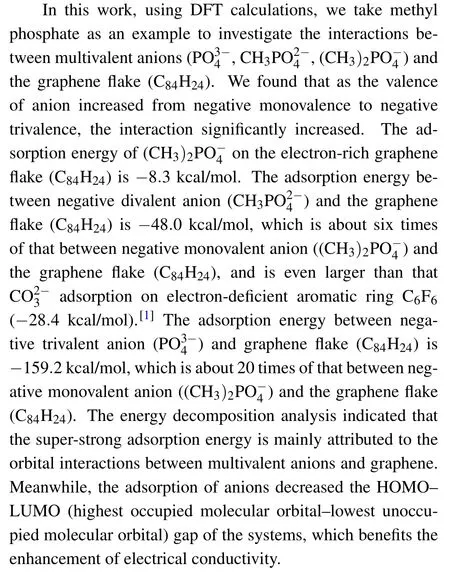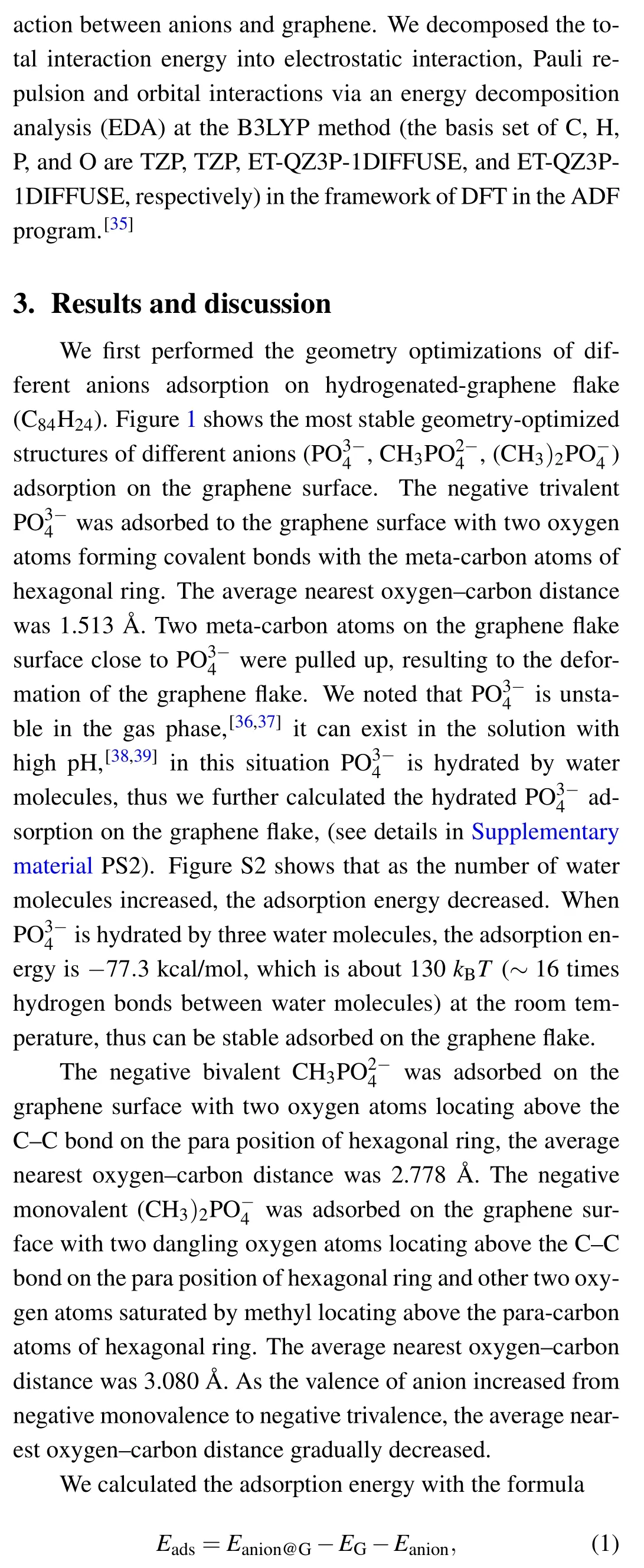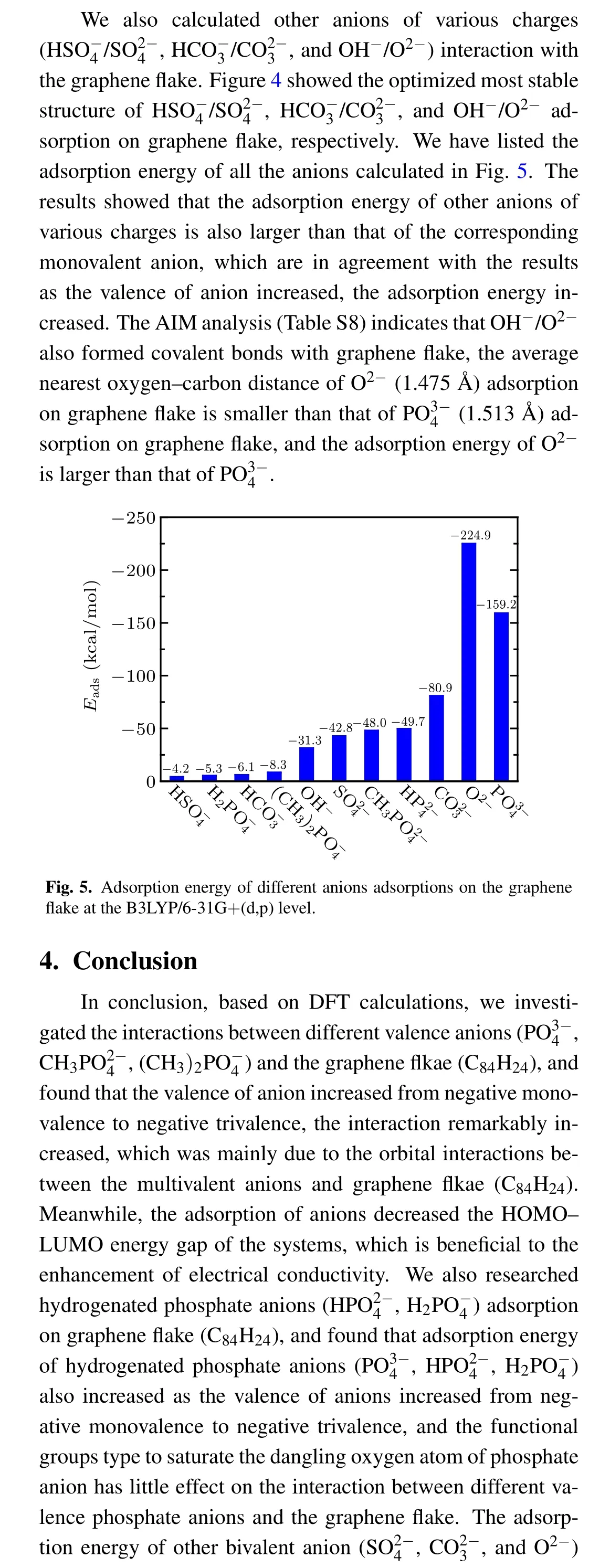Super-strong interactions between multivalent anions and graphene∗
2021-05-06XingLiu刘星andGuoshengShi石国升
Xing Liu(刘星) and Guosheng Shi(石国升),2,†
1Shanghai Applied Radiation Institute,State Key Laboratory Advanced Special Steel,Shanghai University,Shanghai 200444,China
2Division of Interfacial Water and Key Laboratory of Interfacial Physics and Technology,Shanghai Institute of Applied Physics,Chinese Academy of Sciences,Shanghai 201800,China
Keywords: graphene,multivalent anions,anion–π interaction,density functional theory
1. Introduction


Recently,graphene/graphene oxide(GO)-based materials have been employed for the development of DNA biosensors and are widely used in genetics,clinical medicine,pathology,and many other fields.[19–23]These applications are related to the interaction between graphene/GO and DNA.[24–26]However, most researches focused on the interaction between nucleic acid bases and graphene,[27–30]the interaction of backbone phosphate groups are ignored. As an important component of DNA/RNA backbone,phosphate groups played important roles in biochemistry.[31]In the backbone of DNA/RNA,phosphoric group links two nucleotides and still ionized as monovalent anion. At the termini of DNA/RNA, phosphoric group is bivalent anion.[32]Thus,it is necessary to investigate the interaction between phosphate groups with different valence and graphene from the molecular level to provide assistance for the design and application of graphene-based DNA biosensor. Methyl phosphate[33]can be regarded as a simple analog of phosphate moieties in DNA/RNA to research the interaction between multivalent anions and the electron-rich graphene.

2. Methods


where Eanion@G,EG,and Eanionare the total energy of the anion adsorption on a graphene flake, the isolated anion, and a graphene flake,respectively. For different anions,the adsorption energies, average nearest oxygen–carbon distances, and transfer Mullikan charges are shown in Table 1.





猜你喜欢
杂志排行
Chinese Physics B的其它文章
- Quantum annealing for semi-supervised learning
- Taking tomographic measurements for photonic qubits 88 ns before they are created*
- First principles study of behavior of helium at Fe(110)–graphene interface∗
- Instability of single-walled carbon nanotubes conveying Jeffrey fluid∗
- Relationship between manifold smoothness and adversarial vulnerability in deep learning with local errors∗
- Weak-focused acoustic vortex generated by a focused ring array of planar transducers and its application in large-scale rotational object manipulation∗
